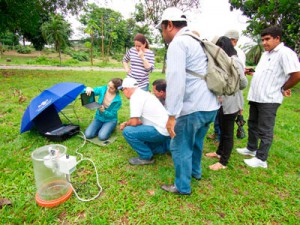This page will be updated regularly once new information is available. Take a look at our → Downloads page for updates.
First Findings
- At all forest sites, we encountered secondary forest (albeit often pretty dense), no undisturbed primary forest. This is even true for the biosphere Reserva Ducke near Manaus, where primary forest was significantly disturbed more than 100 years ago.
- The neighbouring sites with post-forest land cover offered açaí palm, brazil nut, eucalyptus, rubber trees (agroforestry), corn/maize, manioc and orange plantations (agriculture) and pasture land with cattle.
- Average soil/ecosystem respiration (median values for CO2 flux rates) at the forest sites was almost double the rate at other land cover sites.
- In reverse, the forest sites yielded considerably lower (-25%) soil humidity.
- Soil under forest cover (TOP layer) showed higher (+37%) average total carbon (C) concentrations and 15% higher nitrogen (N) concentrations than post-forest soils.
- C, N, and S concentrations (TOP layer) are on the same level as average European agricultural soils (GEMAS project).
- Soil pH and chemistry as well as gas fluxes obviously show strong seasonal signals.

